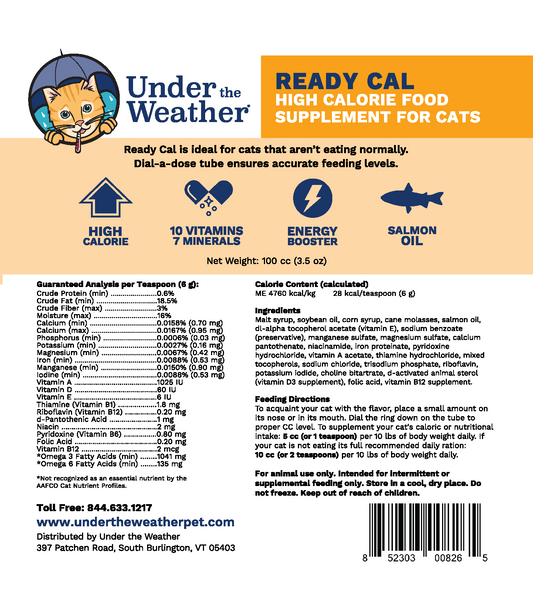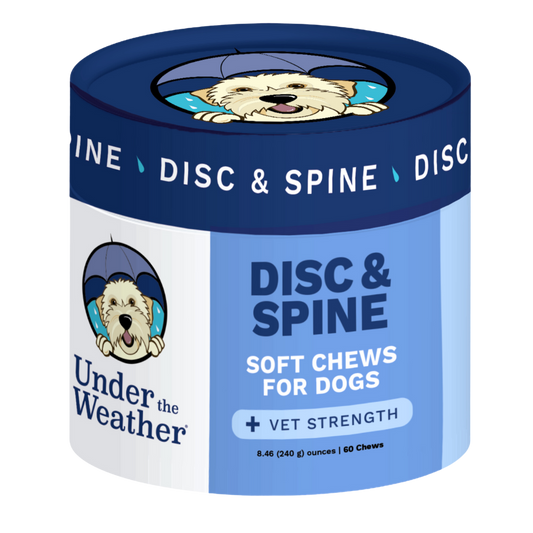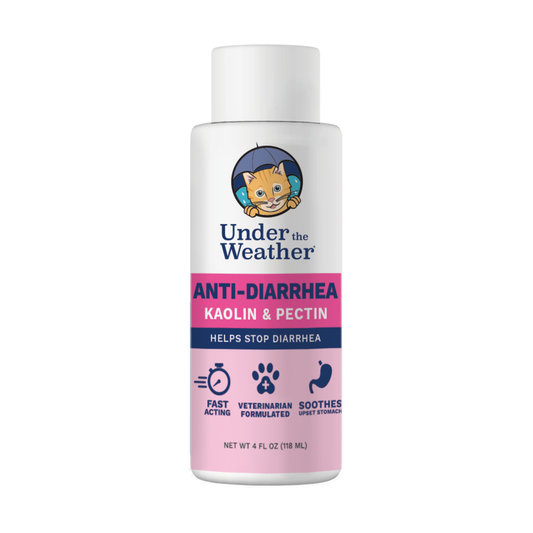Syringe-feeding can be a crucial technique for ensuring your cat receives the nutrition they need, especially in challenging situations. Whether it's due to health conditions or behavioral issues, syringe-feeding can make all the difference. In this article, we will guide you through the process of syringe-feeding and provide helpful tips and tricks to ensure your cat's well-being and nutritional intake.
Understanding the Need for Syringe-Feeding in Cats
Cats may require syringe-feeding for various reasons. It is essential to understand these reasons in order to provide the best care for your cat. Let's explore the two main categories that may necessitate syringe-feeding: health conditions and behavioral reasons.
Health Conditions Necessitating Syringe-Feeding
Certain health conditions can affect a cat's ability to eat on their own. These can include dental issues, jaw fractures, or recovery from oral surgeries. In such cases, syringe-feeding becomes vital for ensuring their nutritional requirements are met.
Imagine your furry companion, whiskers twitching, trying to eat with a painful toothache. Dental issues, such as periodontal disease or broken teeth, can make it excruciatingly painful for cats to chew their food. As a result, they may refuse to eat altogether, leading to weight loss and malnutrition. Syringe-feeding provides a gentle and effective solution, allowing you to carefully deliver nourishment directly into their mouths, ensuring they receive the vital nutrients they need to heal and thrive.
Jaw fractures or recovery from oral surgeries can significantly impair a cat's ability to eat independently. These conditions often require a period of restricted jaw movement or the use of a feeding tube. However, syringe-feeding can be a less invasive alternative, allowing you to support your cat's recovery while maintaining their comfort and well-being.
Behavioral Reasons for Syringe-Feeding
Some cats may exhibit behavioral issues that make it challenging to feed them regularly. These issues could include refusing food due to stress, anxiety, or trauma. Syringe-feeding can help overcome these obstacles and ensure proper nutrition intake.
Picture a timid rescue cat, recently adopted and still adjusting to their new environment. The stress and anxiety of unfamiliar surroundings can cause them to lose their appetite, making it difficult to entice them to eat. In such cases, syringe-feeding can be a valuable tool to provide the necessary sustenance while allowing the cat to acclimate to their new home gradually. By offering small, frequent meals through syringe-feeding, you can ensure your cat receives the nutrients they need without adding stress to their already overwhelmed system.
Cats that have experienced traumatic events, such as accidents or abuse, may develop feeding aversions that prevent them from eating normally. These aversions can stem from fear or negative associations with certain food-related experiences. Syringe-feeding allows you to rebuild trust and establish a positive feeding routine, slowly reintroducing food in a controlled and comforting manner. Over time, this can help your cat overcome their feeding aversions and regain a healthy appetite.
Preparing for the Syringe-Feeding Process
Before starting the syringe-feeding process, it's essential to gather the necessary supplies and prepare your cat's food. Here are a few key steps to follow:
Choosing the Right Syringe
When selecting a syringe for feeding, opt for one with a soft rubber tip and a capacity suitable for your cat's food portion. The soft rubber tip ensures gentle and precise feeding without causing your cat any discomfort.
Preparing the Cat's Food
Before feeding, it is important to prepare your cat's food appropriately. This typically involves blending or pureeing their regular food with water or a suitable liquid to achieve a smooth consistency. Consult your veterinarian to determine the food consistency that fits your cat's needs.
Now that you have chosen the proper syringe and prepared the food let's discuss the importance of creating a calm and comfortable environment for the syringe-feeding process. Cats can be sensitive creatures, and creating a stress-free atmosphere can greatly contribute to the success of the feeding session.
Firstly, find a quiet and secluded area where you and your cat can have some privacy. This will help minimize distractions and allow your cat to focus on the feeding process. Ensure the room is warm and well-lit, as a comfortable temperature and good lighting can help put your cat at ease.
Next, gather any additional items that may help create a soothing environment. Soft blankets or towels can be placed on a flat surface, providing a comfortable spot for your cat to rest during the feeding. You can also play calming music or use a white noise machine to help drown out any external noises that may cause anxiety for your feline friend.
Lastly, establish a routine and stick to it. Cats thrive on consistency, so try to feed your cat at the same time each day. This will help your cat anticipate the feeding process, reducing any stress or anxiety they may feel. Maintaining a consistent routine can also aid in monitoring your cat's appetite and overall health.
Step-by-Step Guide to Syringe-Feeding Your Cat
Now that we’ve discussed the food preparation and environmental factors that can help during the feeding process, let's go through the step-by-step process of syringe-feeding your cat:
Positioning Your Cat for Feeding
Find a comfortable and quiet space to feed your cat. Gently hold them, ensuring they are calm and relaxed. Wrap them in a soft towel or blanket, providing a sense of security and stability during the feeding process.
Creating a soothing environment is crucial for a successful feeding session. Dim the lights and minimize any distractions that may cause your cat to become anxious. Soft classical music or nature sounds can also contribute to a calming atmosphere.
Administering the Food
Slowly draw the prepared food into the syringe, ensuring there are no air bubbles. Place the syringe at the side of your cat's mouth, aiming towards the back of the throat. Gradually depress the plunger, releasing the food in a controlled manner. Take breaks if necessary and allow your cat to swallow between feedings.
It's important to note that each cat is unique, and their feeding preferences may vary. Some cats prefer a warmer temperature for their food, while others prefer a slightly chilled temperature. Experiment with different temperatures to find what your cat enjoys the most. Remember, a happy and content cat is more likely to accept the syringe feeding process.
Additionally, it's crucial to monitor your cat's weight and overall health during the syringe-feeding period. Regularly consult with your veterinarian to ensure that your cat receives the appropriate amount of nutrients and address any concerns. Your vet can provide valuable guidance and support throughout this process.
Overcoming Common Syringe-Feeding Challenges
While syringe-feeding can be a lifesaver, it is not always without its challenges. Here are a couple of common challenges you may encounter and some tips on how to overcome them:
Dealing with Resistance from Your Cat
Syringe-feeding may initially be met with resistance from your cat. This is not uncommon, as cats are particular about their feeding habits. However, you can help your cat overcome their reluctance with patience and positive reinforcement.
Start by offering small amounts of food in a non-threatening manner to build trust. Gently stroke your cat's head and speak to them in a soothing voice to create a calm environment. This will help them associate the syringe-feeding experience with positive interactions. Gradually increase the volume and frequency of feedings as your cat becomes more comfortable.
It's important to remember that forcing your cat to eat can create further resistance and stress. Instead, try to make the feeding process as enjoyable as possible. Experiment with different flavors and textures of food to find what your cat prefers. Warm the food slightly to enhance its aroma and make it more enticing.
Ensuring Proper Nutrition Intake
When syringe-feeding your cat, it's crucial to ensure that it is receiving the necessary nutrients for its overall well-being. Working closely with your veterinarian to establish a feeding schedule that meets your cat's nutritional requirements can be beneficial.
Your veterinarian will consider factors such as your cat's age, weight, and any underlying health condition. Regular check-ups are essential to monitor your cat's progress and make any necessary adjustments to their diet.
Additionally, your veterinarian may recommend specific nutritional supplements to support your cat's health during the syringe-feeding process. These supplements can help provide essential vitamins, minerals, and other nutrients that may be lacking in their diet.
Remember, every cat is unique, and their nutritional needs may vary. It's crucial to follow your veterinarian's guidance and seek their advice if you have any concerns or questions about your cat's nutrition intake.

Post-Feeding Care for Your Cat
After each feeding session, it's essential to provide proper post-feeding care to maintain your cat's health and hygiene:
Cleaning and Hygiene Post-Feeding
Clean the syringe thoroughly after each use to eliminate any food residue or potential bacteria. Also, gently clean your cat's face and mouth with a damp cloth to remove excess food and maintain cleanliness.
Monitoring Your Cat's Health After Feeding
Observe your cat for any signs of discomfort, choking, or vomiting after feedings. If you notice any concerning symptoms, consult with your veterinarian promptly. They can guide you in adjusting the feeding process or exploring potential underlying issues.
Now, let's delve deeper into the importance of cleaning and hygiene post-feeding. Ensuring the syringe is thoroughly cleaned after each use is crucial for your cat's well-being. Food residue left in the syringe can quickly become a breeding ground for harmful bacteria, leading to infections or digestive issues. By taking the time to clean the syringe properly, you are safeguarding your cat's health and preventing any potential complications.
Paying attention to your cat's face and mouth area is equally important. Cats are meticulous groomers who rely on their tongues to clean themselves. However, some food may get stuck around their mouth or on their fur after syringe-feeding. By gently wiping their face and mouth with a damp cloth, you are not only maintaining their cleanliness but also preventing any discomfort or irritation from having food residue on their delicate skin.
Aside from cleaning and hygiene, monitoring your cat's health after feeding is crucial for their overall well-being. While syringe-feeding is a valuable technique for providing essential nutrition, it's essential to be vigilant for any signs of discomfort or potential issues. Keep an eye out for any unusual behavior, such as excessive drooling, pawing at the mouth, or difficulty breathing. These could be indications of an underlying problem that needs immediate attention from your veterinarian.
Remember, your veterinarian is your best resource when it comes to your cat's health. They have the knowledge and expertise to guide you through the feeding process and address any concerns you may have. By working closely with them, you can ensure that your cat receives the best care possible and that their nutritional needs are met.
Mastering the technique of syringe-feeding is crucial for ensuring that your cat continues to receive the necessary nutrients during recovery periods or when dealing with specific health challenges. Under The Weather, Pet has more resources and specialized nutritional products that support syringe-feeding, where we understand the importance of caring for a pet under the weather.












